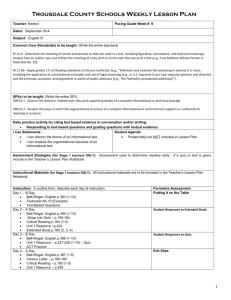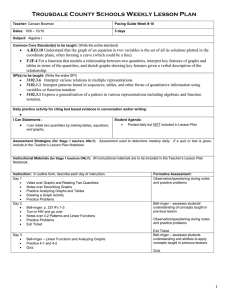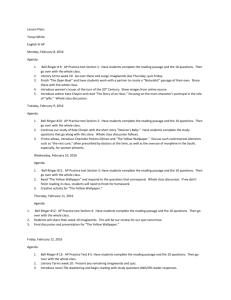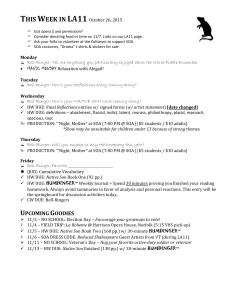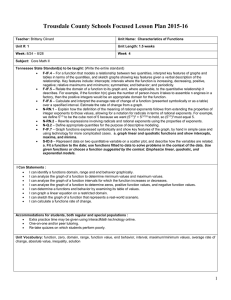Trousdale County Schools Weekly Lesson Plan
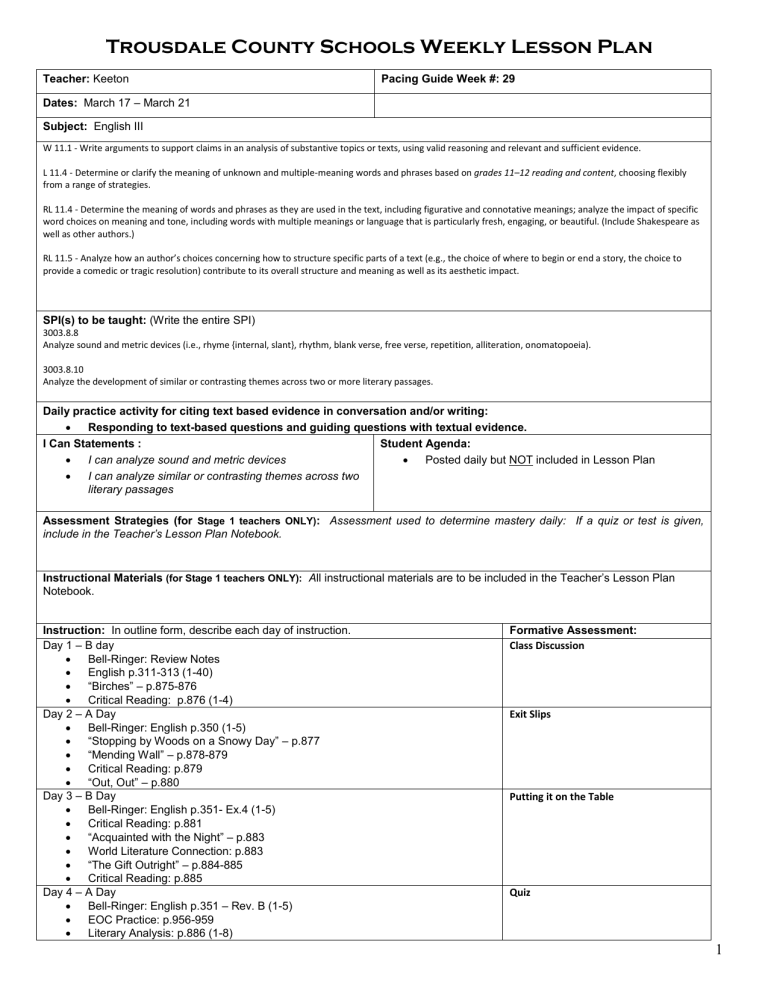
Trousdale County Schools Weekly Lesson Plan
Teacher: Keeton
Dates: March 17
– March 21
Subject: English III
W 11.1 - Write arguments to support claims in an analysis of substantive topics or texts, using valid reasoning and relevant and sufficient evidence.
L 11.4 - Determine or clarify the meaning of unknown and multiple-meaning words and phrases based on grades 11–12 reading and content, choosing flexibly from a range of strategies.
RL 11.4 - Determine the meaning of words and phrases as they are used in the text, including figurative and connotative meanings; analyze the impact of specific word choices on meaning and tone, including words with multiple meanings or language that is particularly fresh, engaging, or beautiful. (Include Shakespeare as well as other authors.)
RL 11.5 - Analyze how an author’s choices concerning how to structure specific parts of a text (e.g., the choice of where to begin or end a story, the choice to provide a comedic or tragic resolution) contribute to its overall structure and meaning as well as its aesthetic impact.
SPI(s) to be taught: (Write the entire SPI)
3003.8.8
Analyze sound and metric devices (i.e., rhyme {internal, slant}, rhythm, blank verse, free verse, repetition, alliteration, onomatopoeia).
3003.8.10
Analyze the development of similar or contrasting themes across two or more literary passages.
Daily practice activity for citing text based evidence in conversation and/or writing:
Responding to text-based questions and guiding questions with textual evidence.
I Can Statements :
I can analyze sound and metric devices
I can analyze similar or contrasting themes across two literary passages
Student Agenda:
Posted daily but NOT included in Lesson Plan
Assessment Strategies (for Stage 1 teachers ONLY) : Assessment used to determine mastery daily: If a quiz or test is given, include in the Teacher’s Lesson Plan Notebook.
Instructional Materials (for Stage 1 teachers ONLY): A ll instructional materials are to be included in the Teacher’s Lesson Plan
Notebook.
Instruction: In outline form, describe each day of instruction.
Day 1
– B day
Bell-Ringer: Review Notes
English p.311-313 (1-40)
“Birches” – p.875-876
Critical Reading: p.876 (1-4)
Day 2
– A Day
Bell-Ringer: English p.350 (1-5)
“Stopping by Woods on a Snowy Day” – p.877
“Mending Wall” – p.878-879
Critical Reading: p.879
“Out, Out” – p.880
Day 3 – B Day
Bell-Ringer: English p.351- Ex.4 (1-5)
Critical Reading: p.881
“Acquainted with the Night” – p.883
World Literature Connection: p.883
“The Gift Outright” – p.884-885
Critical Reading: p.885
Day 4
– A Day
Bell-Ringer: English p.351
– Rev. B (1-5)
EOC Practice: p.956-959
Literary Analysis: p.886 (1-8)
Formative Assessment:
Class Discussion
Exit Slips
Putting it on the Table
Quiz
1
Day 5
– B day
Bell-Ringer: English p.354 (1-5)
Section Quiz: p.278-280 (Unit 4 Resource)
Day 6
Student Responses
Day 7
Alternate Instructional Interventions: Provide a specific plan for alternate instructional interventions, or re-teaching.
I will provide interrelated activities that are based on student needs for the purpose of ensuring that all students come to a similar grasp of a skill or idea. The ideas, concepts, and standards intended to have been taught each day will be measured through the formative assessments. Results of the assessments will dictate when re-teaching needs to occur. For students requiring intervention, I will model strategies while guiding students in completing the activities and prompts. As students complete the selections, I will monitor comprehension frequently with group questions and individual instruction.
Instructional technologies to enhance learning: List how each will enhance the effectiveness of the lesson.
iPad
– Used to access internet sources to read a variety of subject matter not found in the text book.
eBackpack – Used to give students access to workbook pages and online texts.
2
